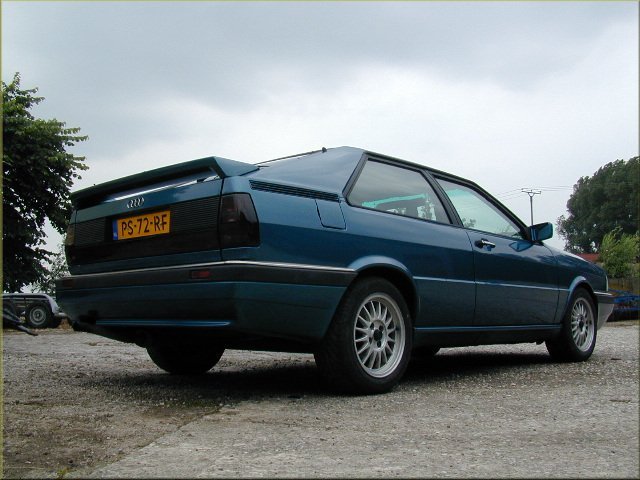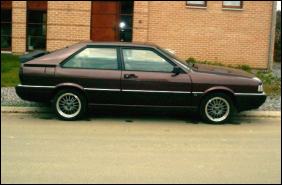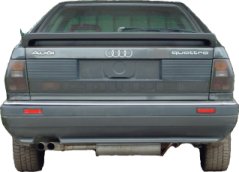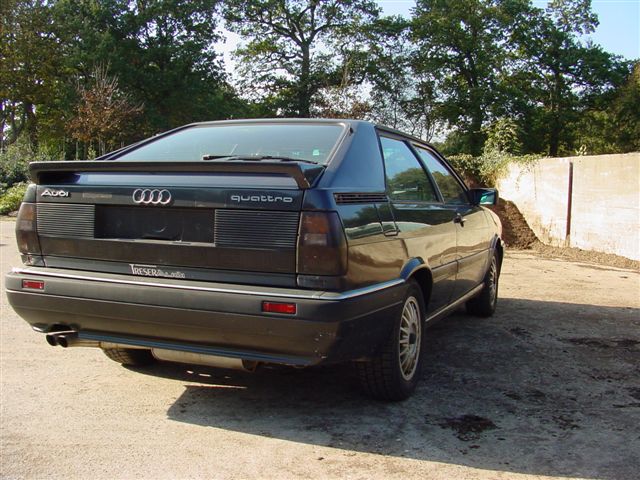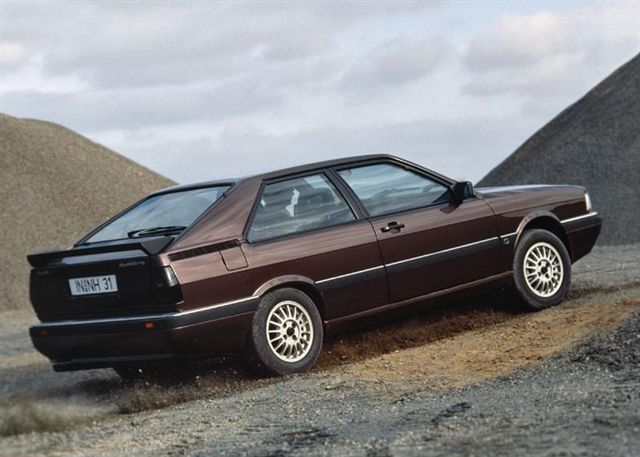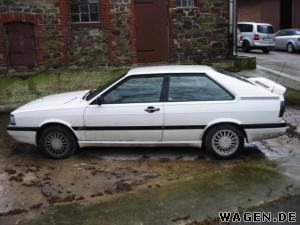The Coupe Quattro
My CQ
Ongoing Restoration
Gallery
Info / Data
Suppliers
Links
T85q.com
Audi Coupe and Coupe quattro Front Suspension Bushing Replacement
Subframe BushingsIf your Audi 5000T/Q or Audi 100/200T/Q has over 100k miles on it, I recommend that you have the front end rebuilt and have all the associated bushings replaced. This will greatly improve the handling and safety of the Audis and enhance the driving experience.The steering rack pre-load adjustment should also be done, see procedure described above for details. On the 1991 200TQ 20V, the Audi V8 and on the later 1992> Audi 100/S4 you may want to check/replace the steering damper as well. Before starting this suspension rebuilding procedure, I recommend you have the Bentley manual for your specific vehicle at your side, and you should read through the front suspension section. Disassembling a suspension and replacing components can be a VERY Dangerous process if you don't have prior automotive repair experience. You can do this front end rebuild in several stages if you don't want to take on the whole project at once. The subframe bushings don't have to be replaced in every case, but you should replace the lower control arm bushings, the inner stabilizer bushings, and the outer stabilizer bushings. The engine and transmission mounts can also be replaced while you are in there. Stage 1: Replace lower control arm bushings, inner stabilizer bushings, and outer stabilizer bushings. Replace appropriate hardware (bolts and lock nuts as required) Replace subframe bushings (optional) Replace rear transmission mounts (optional) Replace Engine Mounts while subframe is removed from vehicle (optional) Stage 2: Remove Strut and coil spring assembly: Remove coil spring using approved and safe spring compressor, (use stock or aftermarket coil springs) and replace upper strut bearing and upper strut mount. Replace Strut boots, and strut bump stops (optional) Replace Wheel Bearings (optional) Replace inner and outer CV Boots, clean and repack CV Joints (optional) Replace tie rod ends (optional) Replace required hardware (bolts and lock nuts) Parts List Stage 1: * Lower Control Arm Bushings (2) * Lower A-arm Outer stabilizer bushings (4) * Front Inner stabilizer bushings (2) * Required hardware and lock nuts * Optional: Subframe Bushings (2 front) * Optional: Subframe Bushings ( 2 rear) * Optional: Rear Trans Mounts (2) * Optional: Engine Mounts (2) Stage 2: * Upper Shock/strut mounts (2) * Upper Strut Bearings (2) * Optional: Front Shock/Strut dust boots (2) * Optional: Front Shock/Strut Bump Stop (2) * Optional: Front Wheel bearings (2) * Optional: Tie rod end Left * Optional: Tie rod end Right * Optional: Upper Coil Spring Rubber damping rings * Optional: Upper Strut Dust covers for strut bearings. * Optional: Inner CV boot kits (2) * Optional: Outer CV boot kits (2) * Required Hardware and lock nuts If you decide to replace the subframe bushings, you will likely want to replace the rear transmission mounts as they can be easily replaced when you remove the subframe assembly. These rear transmission mounts can sag and get mushy from leaking power steering racks. It is also a good idea to check/replace the engine mounts when the subframe is off the vehicle. If you have a grinding/rubbing noise when turning the wheels with the car at rest, you may want to plan on removing the front strut assemblies, compress and remove the coil springs and replace the upper strut bearings. Often times the upper strut bearing plastic dust covers get deformed and allow dirt/grit to make its way into the strut bearings. Along with the upper strut bearings, you may want to replaced the rubber shock boots and consider having new wheel bearings pressed into the strut housings while you have them off the car. It is not uncommon for the front wheel bearings to start making noise as the mileage gets above 100K miles. The tie rod ends should also be checked for excessive play, and torn dust boots, and make sure the adjustment thread lock nuts are loosened, and clean off any rust and make sure they are well lubed to make the toe in adjustment and front end alignment easier. If you have the original Constant Velocity (CV) Joints and the original CV boots that show signs of cracking, it is a good idea to remove the front axles, press off the inner and outer CV joints, disassemble and clean them, inspect and re-grease them, and install new inner and outer rubber boots. This is a horribly messy job that no one enjoys, but at least it ensures that a CV boot won't crack and allow the CV joint to spew grease everywhere later on down the road. As mentioned previously, the factory repair procedure requires the replacement of the lock nuts and bolts used for mounting critical suspension components. Acknowledgements: http://www.sjmautotechnik.com |
Click Here to email me
